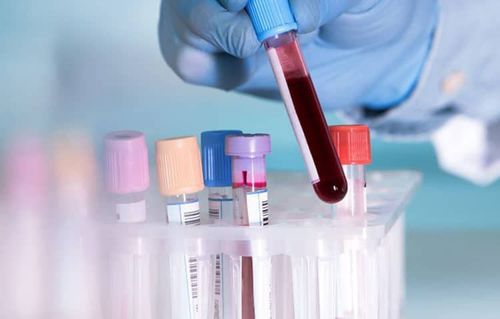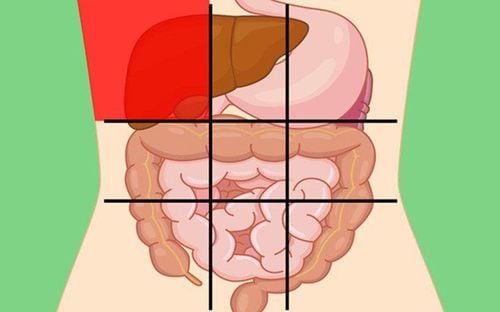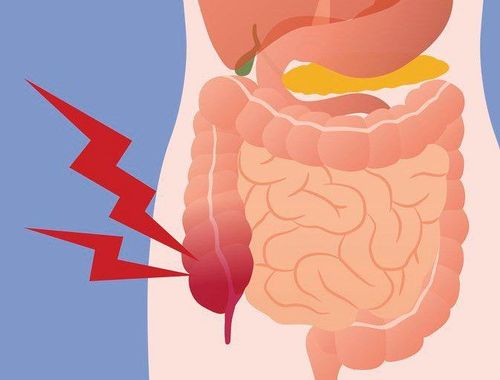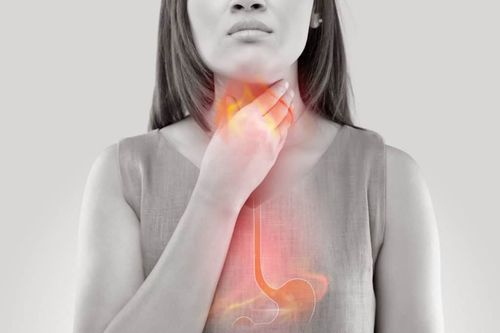This is an automatically translated article.
The article is professionally consulted by Master, Doctor Nguyen Thai Binh - Gastroenterologist - Department of General Surgery - Vinmec Ha Long International General Hospital. Master, Doctor Nguyen Thai Binh has more than 20 years of experience working in abdominal surgery.One of the most common surgical emergencies is acute appendicitis. The disease occurs most often in people 20 to 30 years old. 70% of people with the disease have classic symptoms. The mortality rate accounts for about 1% of patients, the main cause is the ruptured appendix causing peritonitis because it is not detected early and timely.
1. Learn about appendicitis
The appendix is part of the digestive tract. The structure of the appendix is tubular with one end sealed, the average length is about 8cm, the average diameter is from 0.5 to 1cm, the base of the appendix is small and the lumen is narrower, so it is easy to be blocked and cause inflammation. The base of the appendix is the meeting place of the three longitudinal muscle bands of the cecum. Therefore, the most common site is posteriorly, in the cecum in the right iliac fossa. However, the appendix can be encountered in other locations such as posterior cecum, pre-ileal, pelvis,...The peritoneum is a cell membrane, the inner surface layer of the abdominal wall, partially or completely covered. set of organs. The peritoneal cavity is a virtual space containing 75 to 100 ml of yellow fluid. In women, the peritoneal cavity communicates with the outside through the fallopian tubes.
Appendicitis peritonitis is a serious, dangerous and common complication of acute appendicitis. The main cause is that the disease is not detected and treated early, leading to the rupture of pus into the abdomen, causing inflammation throughout the abdomen, septic shock, and worse, death.
2. Symptoms of appendicitis peritonitis
2.1 Function Abdominal pain: This is the first symptom, helping the doctor to orient to appendicitis. Pain usually begins in the epigastrium and around the navel, a dull ache, sometimes with intermittent cramping, and tends to be localized in the right iliac fossa. The location of pain will vary depending on the location of the appendix, so when a patient presents with abdominal pain, the first differential diagnosis is appendicitis. When the pain is no longer localized in the right iliac fossa and spreads to the entire abdomen, this is a sign that helps the doctor to direct the patient to a complication of peritonitis. Gastrointestinal disorders: About 75% of patients have nausea and vomiting caused by peritoneal irritation, bowel obstruction, abdominal distention due to functional paralysis or irritation will cause diarrhea.
3. Diagnosis of appendicitis peritonitis
3.1 Blood test Elevated white blood cell count, mainly neutrophils, leukocyte formula turned left3.2 Ultrasound The fluid in the intestinal lumen, abdominal cavity, dilated loops contain fluid and gas. If you see a picture of a gloved finger, a sign of a target, it is caused by a ruptured inflamed appendix.

4. Treatment of appendicitis peritonitis
The principle of treatment is surgical treatment as soon as possible and active resuscitation, not prolonging the preoperative recovery time.4.1 Intensive Resuscitation Give fluids and electrolytes to avoid fluid and electrolyte disturbances. Alkaline balance. Strong, broad-spectrum antibiotics right from the start. Closely monitor vital indicators: pulse, temperature, blood pressure,... 4.2 Surgical treatment The surgery takes place as soon as possible
Surgery to remove the inflamed appendix. Clean the abdominal cavity, drain the locations or stagnate fluid: low-lying areas, pits, ... Close the abdomen with a layer to expose the skin. Peritonitis with ruptured appendix is one of the most common surgical emergencies. The disease can be life-threatening if not detected and treated promptly. You need to see a doctor when there are signs of abdominal pain, especially pain that tends to be localized in the right iliac fossa, abdominal distension, not passing stools.
Vinmec International General Hospital is one of the hospitals that not only ensures professional quality with a team of doctors, modern equipment and technology, but also stands out for its examination, consulting and service services. comprehensive and professional medical treatment; civilized, polite, safe and sterile medical examination and treatment space.
Please dial HOTLINE for more information or register for an appointment HERE. Download MyVinmec app to make appointments faster and to manage your bookings easily.














